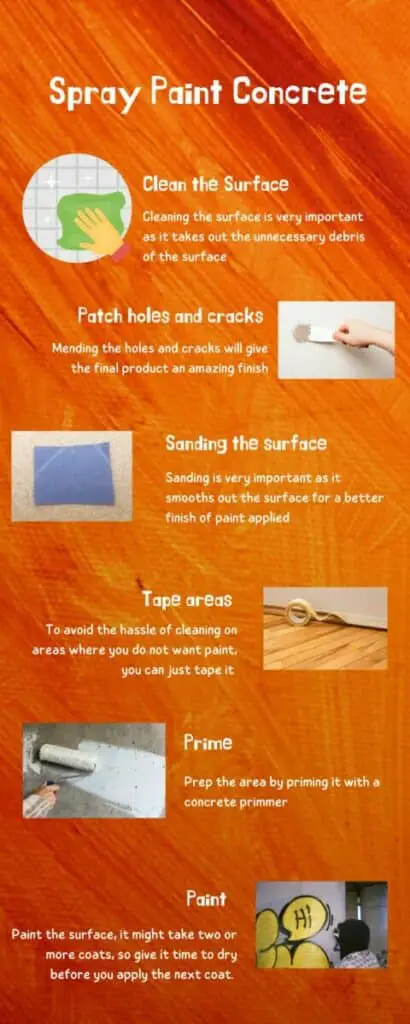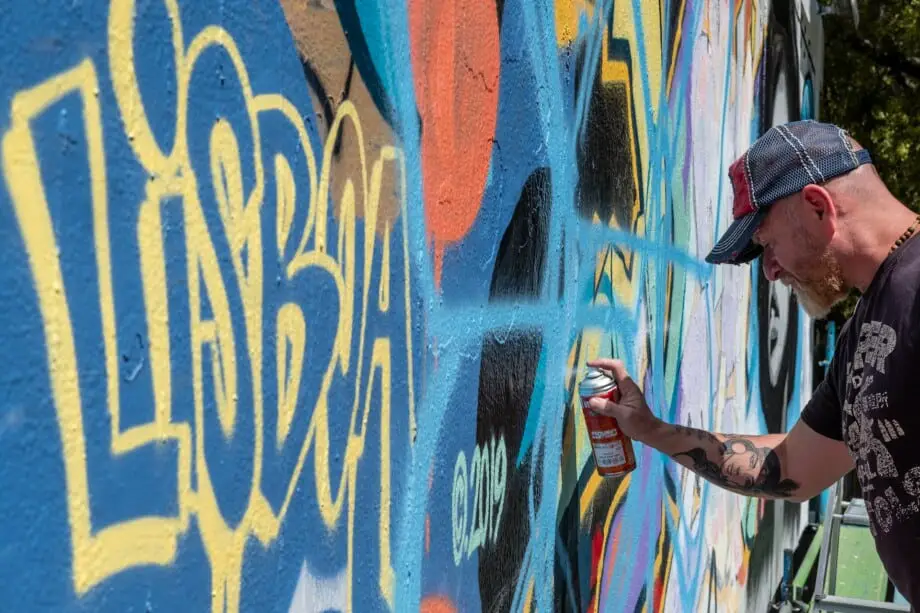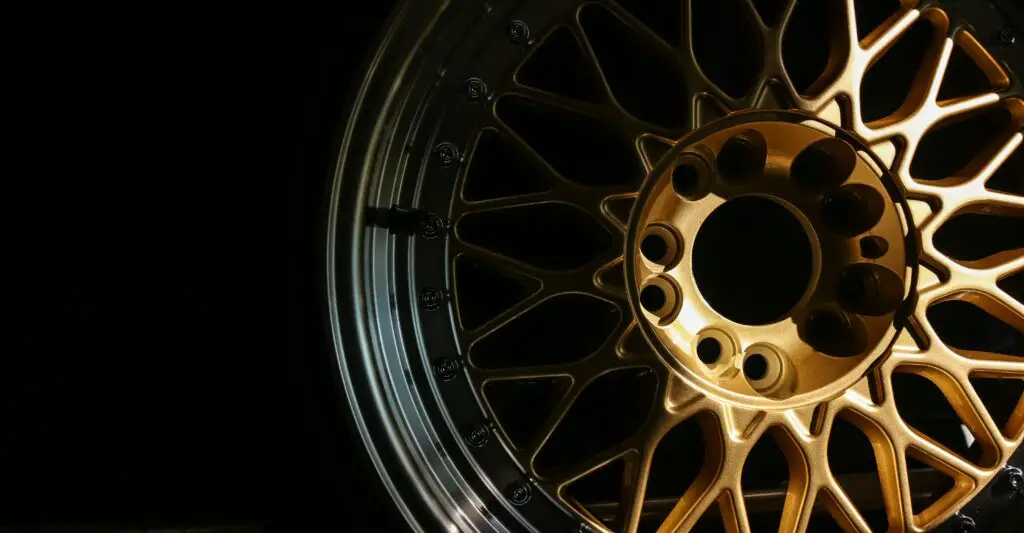Concrete is a durable building material, but too much of its gray color can be a bit boring. Luckily, I can help you cover imperfections and spruce up the look of any concrete object, from walls to basements and driveways, with a coat of spray paint. With my tips, you can spray paint concrete walls and achieve a smooth finish that doesn’t chip or feather away.
Yes, you can easily spray paint on concrete surfaces with the correct technique. Start by cleaning the surface you want to paint and follow it up with a thorough sanding to achieve a smooth base. Apply a coat of primer to build a strong foundation, and finally, spray the paint in multiple thin layers for an even finish.
Painting on concrete can be tricky, and it’s easy to mess up the paint job if you don’t follow the right process. Here is everything you need to know about painting concrete surfaces like a pro while making sure it stands the test of time.
What Kind Of Spray Paint To Use On Concrete?
A spray paint DIY is the easiest way to bring life to old and dull concrete surfaces. It not only enhances the appearance of concrete objects but also protects surfaces from stains.
While the thought of clean and freshly-painted concrete is appealing, choosing the right type of paint is critical to give your masonry surface a new look. There are two types of concrete paints:
- Acrylic latex paint
- Epoxy paint
Each type of concrete paint has pros and cons. Familiarize yourself with the two, so you know which kind of paint is better suited to your project.
Acrylic Latex Paint
Acrylic latex paint is water-based and makes paint application on concrete seem like a breeze. The paint mixes and spreads quickly on masonry surfaces without special tools such as brushes or rollers. It is a budget-friendly option that can be used to paint walls, floors, steps, etc.
The downside of acrylic latex paint is that it’s not as durable as epoxy paint. As easy as it is to apply it, the paint comes off rather quickly and requires a fresh coat every 2-3 years.
Epoxy Paint
Epoxy paint is available in different variants, such as two-part solids-based, water-based, or solvent-based. It is an acrylic latex product that contains a small amount of epoxy in the mix. The addition of epoxy provides a tough and durable protective coating that is easy to maintain.
The main difference between epoxy and ordinary paint is that epoxy ensures that the paint adheres to the concrete surface better, whereas standard acrylic paint will eventually flake and peel.
Epoxy kits contain two liquids that must be mixed before application: an epoxy resin and a hardener. This type of paint is difficult to spread and is more labor-intensive. Apart from the additional paint application hours needed for epoxy paint, it is more expensive than acrylic paint. However, the results of epoxy paint application are amazing and worth the cost.
Additional Considerations For Paint Selection
If you plan to spray paint concrete, the type of paint you select isn’t limited to the latex vs. epoxy debate. There are other important considerations that you should keep in mind before starting your project.
- Where is the object that you want to paint? Floor paints and epoxies are heavy, so they don’t work well on vertical surfaces. So, it’s better to buy concrete wall paint or concrete brick paint.
- If you want to use the paint outdoors, make sure the paint is exterior-grade and weather-resistant. Exterior-grade paint and epoxies hold up well under harsh weather conditions and require fewer repairs and touch-ups.
- Decide on the paint finish you want. A glossy surface is smooth, easy to clean, and overall more durable. But a matte finish would be more suitable if you want your masonry to blend into the background.
Materials You Will Need To spray Paint Concrete
Painting concrete is not as easy as painting a regular wall, but if you do it correctly, it can make your home look modern and neat. Here are the equipment and materials you will need for spray painting concrete.
- A stiff bristle brush
- A putty knife
- A pole sander
- A paintbrush, roller, or spray paint
- Protective gear mask, gloves, eye googles and apron
- A vinyl concrete patching compound
- Sandpaper
- Concrete sealing primer
- Non-skid concrete paint
- Painters tape
6 Steps To Apply Spray Paint To Concrete
Now, let’s get down to the real task. Please remember to wear protective gear so the paint doesn’t come in direct contact with your skin, eyes, or clothes, as it can be hazardous to health. Also, if the object you’re painting is brand new, wait for at least a month before painting it; otherwise, the paint will not adhere to the surface properly.
You can follow this step-by-step guide for painting on concrete.
Step 1: Clean the Concrete Surface
You can achieve good paint results only if you start with a clean surface. Therefore, you must thoroughly clean the concrete surface with a stiff-bristle brush and remove loose concrete and debris. If you are working outdoors, remove any weeds or moss growing out of the area you want to paint.
You can use warm soapy water to get rid of any grime or dirt. If you have a power washer, take it for a spin and cut your cleaning time, but let the concrete dry completely before moving on to the next step.
Step 2: Patch Holes and Cracks
Concrete has small holes and cracks that can result in a patchy paint application. You can smooth out the texture by filling in the holes with a putty knife and concrete compound.
Step 3: Sanding
Use sandpaper to sand off any rough bumps or spots. If you are painting a large surface such as the basement floor or a wall, you can attach the sandpaper to a pole sander to cover more area quickly. After sanding, make sure to clean up any residue.
Step 4: Tape off areas you want to keep paint-free
It is a good idea to tape off any nearby areas where you don’t want to paint accidentally. For example, if you’re painting up to the edge of a wall, you can apply tape on the base to keep paint off of it.
Step 5: Prime the concrete
Concrete is a highly porous surface, so if you skip the priming step, the paint will not stick to it. Apply primer evenly over the surface with a roller or brush and wait for at least 30 minutes before you start painting. Some paints already have a primer in the formula; in that case, you can skip this step.
Step 6: Apply Paint
Now start applying paint to the prepped and primed concrete. You can use a brush, roller, or spray to cover the surface completely. Some masonry paints are thicker in texture and might clog air sprayers. So, if you plan to spray paint, buy a product that works well in a sprayer.
A single coat might not be enough, so apply paint in 2 to 3 layers for a rich and even finish. It would be best to let the area dry for at least a day before you go in with the next coat. If you are painting outdoors, scan the weather forecast before starting the project to avoid any surprise rainfall.

FAQs
Does painting concrete last?
Spray paint lasts on concrete for 3-5 years, depending on the type of paint you use and the elements the area is exposed to.
Is it better to roll or spray paint concrete?
Spray painting concrete is better than rolling because you can achieve an even finish even on rough and porous surfaces. However, it needs more number of coats as the paint goes on thinly with each coat.
Does painting concrete make it slippery?
Freshly-painted concrete surfaces tend to be slippery, but you can reverse that effect by using non-skid concrete floor paint.
Can you spray sealer on concrete?
Yes, you can apply a penetrating concrete sealer with a spray. If you are working with decorative acrylic sealer or epoxy floor coating, it is better to use a roller.
Can you spray paint concrete statues?
Yes you can most definitely spray paint concrete statues. You can use one basic color for whole statue or just a few different colors to create depth and make them life like. In any case, it is always better to prep the surface before spray painting them.
Can you spray paint concrete-Conclusion
Spray painting on concrete is not as difficult as it may look at first. Especially when you picture a perfectly-painted surface, all the effort seems worth it. With the correct tools and technique, you can easily paint any concrete surface regardless of size and condition.
Do check out our blog how to apply waterproof spray paint which might help you further increase your knowledge.


